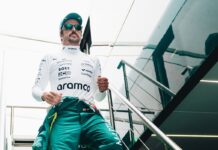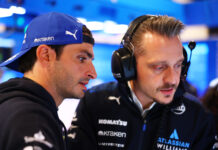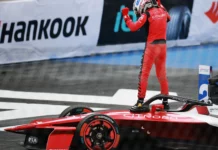The F1 team bosses have their say on the proposed 2026 regulations changes where much like the drivers, they do have some concerns too.
Ever since the F1 2026 regulations were published, there has been various opinions regarding the changes especially on the weight side and potential slowness of the cars. In addition, the DRS replacement topic with Manuel Override Mode was also discussed.
Much like the drivers, the F1 team bosses too are not certain how some of the rules can be achieved as set out by the FIA. The weight is certainly one of it, while the complication around the MOM too is not feasible as such they feel for the fans.
The good thing is that the FIA is open for discussions and recently the WMSC noted about e-vote to be taken up in future to fix the F1 regulations. In the meantime, there will be deliberation to understand if they need any changes made to the rules.
F1 2026 regulations –
Mike Krack: “Yeah, there was a first publication in Canada. I think we are quite far away still from the final one. And I think it’s now up to all stakeholders to discuss, work on possible issues in a constructive way, rather than using the media to try and put something forward. So I think over the next weeks and months at TAC level, I think we will be able to iron out all the issues that are still there.
Andreas Stella: “As for McLaren, we are in agreement and we support the intent and the objectives at high level that were stated in the press release. However, if we look at the regulations in the draft form that has been circulated, they are still far from being able to achieve those agreeable objectives and intent. So it is the time for the FIA, F1, and the teams to work together, listen to one another, and contribute to form a solution that will allow the sport to meet those objectives. I think if we meet those objectives, we’re going to have Formula 1 in a good shape, but we need to make sure that when it’s the time of implementation, we actually deliver a product that meets those targets and objectives.”
Ayao Komatsu: “I honestly don’t have much to add. There’s more work needs to be done, but we just need to do it in a collaborative, transparent way to achieve those objectives Andrea mentioned.”
James Vowles: “I think the bit I would add to it is that there are probably two different concerns at the moment. First and foremost, there’s the aerodynamic side, so what we’re doing with either freedom or physically how fast the cars will be. And then the second side of it is where we are on weight. And I’ve been vocal already a few weekends ago, I put it from William’s perspective, but I don’t think anyone will hit that weight target particularly. It’s going to be incredibly difficult, and I think that needs reviewing because as someone that spends their life going through marginal gains, taking weight out of a car, it’s not a fun thing to do. On the second side of things, I would absolutely agree with my peers here that it is in a position where if we work together, and we will do going forward on this one, we can get it to a really good position, I think. It’s a solid foundation to work from, but we do need to clear up some aspects of it.”
Christian Horner: “It is tricky, as Colin Chapman would say, ‘show me the rules and I’ll decide if I enter or not’. I think it is the same for everybody, it is going to be compromises and the most important thing is that there’s enough freedom for there to be a difference between the cars so they don’t all look identical. We have a budget cap, and the engineering creativity is there so that it doesn’t just become a battery-fuel formula, it becomes a chassis-engine combination. And if you don’t have the best engine, maybe you can compensate a bit on the chassis and vice versa. So I think it’s finding that balance, and I think, hopefully, the recommendations that will come back will be sensible.”
Regs failing where –
Stella: “Yeah, I think the main gaps are in Article 3, which is the aerodynamic regulations. And the second one is I still think that the way in which the power units are planned to be used needs to be adjusted. We can still achieve a 50-50 concept, which is a nice concept, but it can be achieved in a way that doesn’t put so much of our requirement on the chassis side, which then is difficult to meet. So I think from a power unit point of view, likewise from a chassis point of view, it’s time that all parties understand that they need to contribute to the success of the sport.”
Simulator run and results so far –
Toto Wolff: “Regulations have been decided on the power unit side. That’s pretty clear. And on the chassis side, the FIA and the teams agree that we need to optimise the regulations because the car’s performance is just not good enough at that stage. Having said that, I’m sure we can achieve that.”
Stella: “Well, I would say that at the moment, the way cars are in the draft version of the regulations – and we need to say draft, because like we say, there’s a lot of work to do – the cars are not fast enough in the corners and too fast in the straights. So these two aspects need to be rebalanced.”
Vowles: “In the sim, yes,. I would say for me, to answer your second bit of the question first, it’s imperative that we are still the leading series in motorsport. That’s how I see us. We’re the pinnacle of this. And therefore, as a result of that, we need to make sure that we’re maintaining the performance and speed we have. And right now, I think Andrea summarised it well, there’s a mismatch there, fundamentally. The performance difference to an F2 car could be as small as a few seconds. And that’s starting to get a little bit tight, especially when you compare it to the other series around the world that you’ve nominated. But also, as Andrea mentioned, these are draft regulations. And just this week, in fact, there were two changes which took quite a bit of downforce away. I’m confident we’ll get to a better solution in that regard. It’s not that we’re so far away. Just a little bit more work required, though.”
DRS removal and complex situation added –
Vowles: “It goes back to what’s the intent behind these rules. The intent behind these rules is let’s go to a different power unit formula, let’s go to synthetic fuel, let’s go to a different environment in that regard. And I think all of that is quite good. In terms of the X modes… So, just for clarity, that’s effectively reducing drag in a straight line and the Z mode, which is increasing downforce through the corners. I actually quite like the concept to be automated. It’s not that the drivers will have to twiddle anything on the steering wheel. We can optimise the car in those circumstances. I actually think it’s quite a clever way of having a more efficient car in that environment. So that complexity of things, personally, I’m comfortable with it, and I think the world will get used to it quickly. I think what we’re talking about more is how do we make this a product that is just the pinnacle of motorsports, and what’s the right formula that achieves that?”
Komatsu: “And also in terms of freedom of design, especially on aerodynamic side. At the moment in the draft regulation, I’m not sure if that balance is hit right in terms of how things are prescribed. So again, all those philosophies, how we present ourselves as the pinnacle of motorsports, in terms of engineering as well, to have some freedom or probably a bit more increased freedom in aerodynamics, that is important as well. So again, various aspects we need to look into to make it really represent the pinnacle motorsport.”
Stella: “I would just add that I think some part of the complexity is more in the language than in the substance, because when we talk about the X-Mode, like it’s the DRS open, potentially even at the front, but the concept of opening DRS is very well established. And also I think that some of the complexity that is still lingering on and I think still especially on the power unit side, is because of the immaturity of the regulations. I think once they mature, they will become even simpler. Or at least I would hope that we can achieve both things through the work of development and collaboration.”
Krack: “Yeah, I think it’s a lot of engineering language. It’s like Z-mode, X-mode, energy management and so on. I think, you know, in terms of complexity, I think we need to focus on the product and the fan, and the spectator. I’m a bit scared that in 2026, we will have driver press conferences or driver interviews speaking about all these technicalities that a lot of people will not understand and lose interest just because of that. So that is something that I think we need to be really careful. If we have different energy management from track to track or constraints on the car that makes one car maybe go to the front, one to the back, and then how to explain this? So I think that is something that we really need to keep in mind.”
Tweaks if possible –
Wolff: “There is a governance in place and if you are there to the governments, that’s for me the most important. But I think on the power unit side, the ship is sailed, there is teams that feel they are on the back foot and there are other teams that will feel, OEMs that have done a good job and that’s the normal kind of wrestling on regulations. But on the chassis side there’s tweaks that are possible that we need to do but on the engine side the process is far too advanced.”
Frederic Vasseur: We know that 2026 is important for F1, it is an important change in regulation, probably the most important that we never had. We need time to work on the regulation, to improve things. The FIA is open to do it, for sure we have scheduled a timelime that we have to follow and this is the process. But I think everybody on the table is perfectly aware, that it is a crucial step and everybody is pushing in the same direction.”
Horner: “Absolutely, the one thing we’ve got is time. And I think the FIA have been very open in their listening they’ve taken the feedback and lets see what they come back with but I’m not too worried about it. There’s always one that doesn’t wanna change anything. Look, that’s down to the FIA. It’s never too late – they have all the knowledge and all the simulations. I think you’ve got to look at what’s best for Formula 1 at the end of the day, and what will produce the best racing, so trust in them and FOM [Formula One Management] to make the right calls. But, whether that’s required or not, I think they’ve got all the knowledge to know.”
Here’s Pirelli undertaking latest 2025 test
Here’s FIA on e-vote for 2026 regs
Here’s F1 drivers giving varied opinion on 2026 regs
Here’s first look at F1 2026 regs
Here’s F1 drivers on yellow, red flag lap deletion
Here’s link to a F1 Discord channel, join in to interact



















